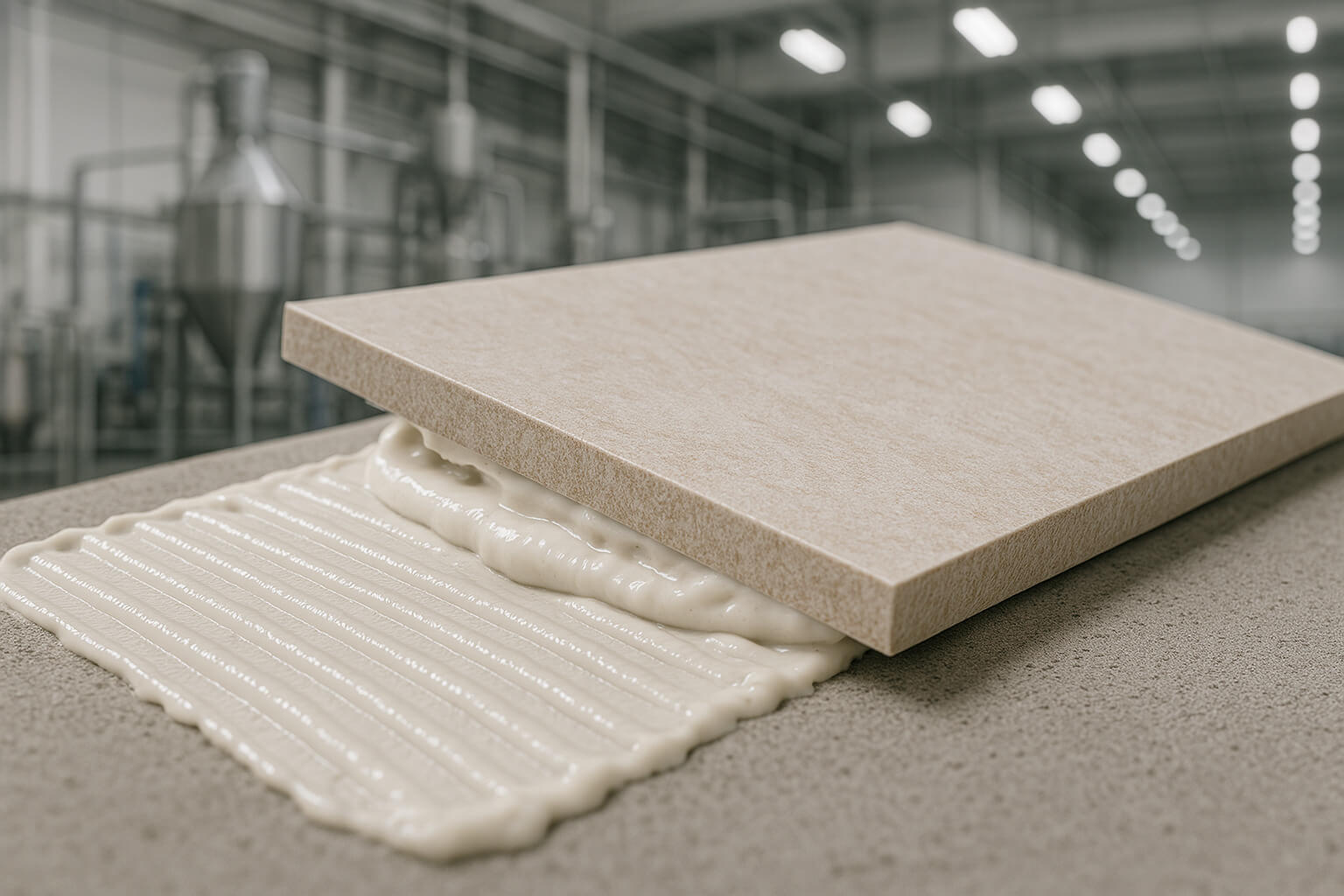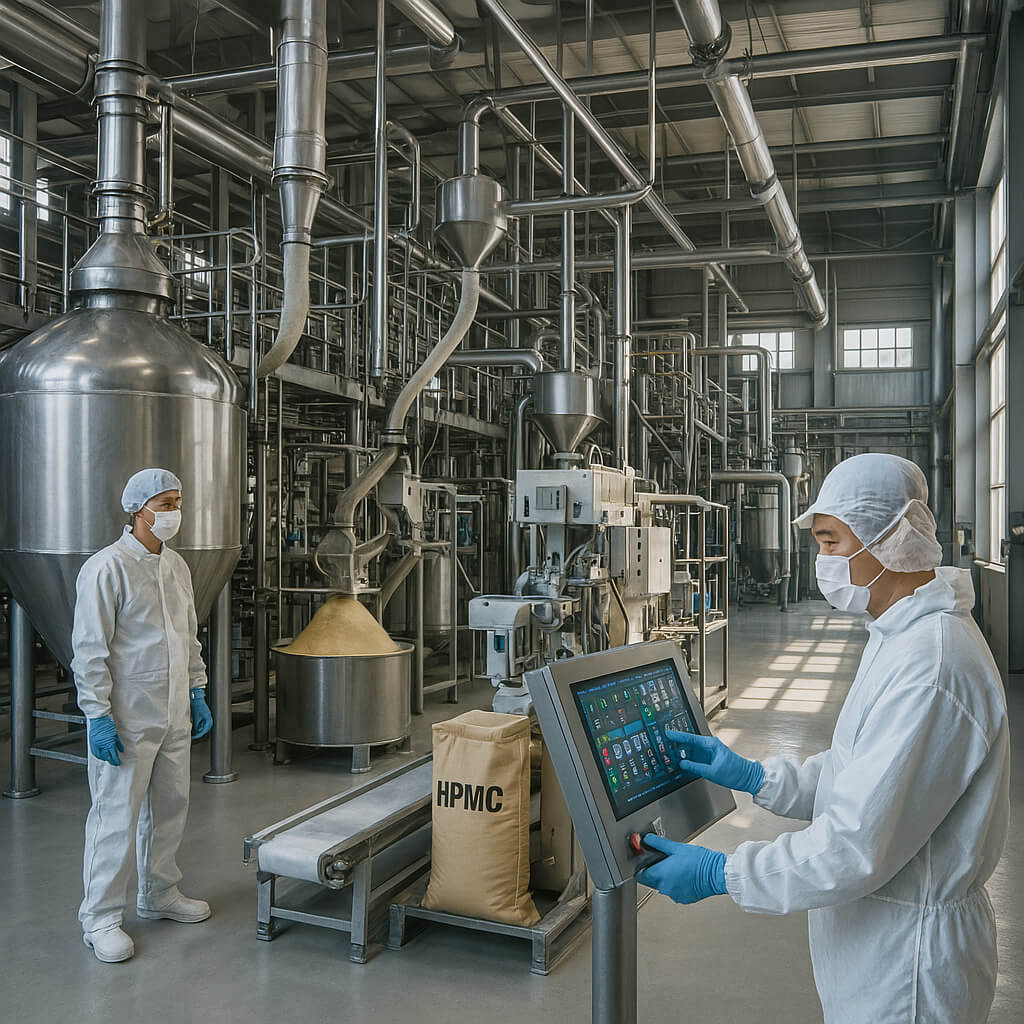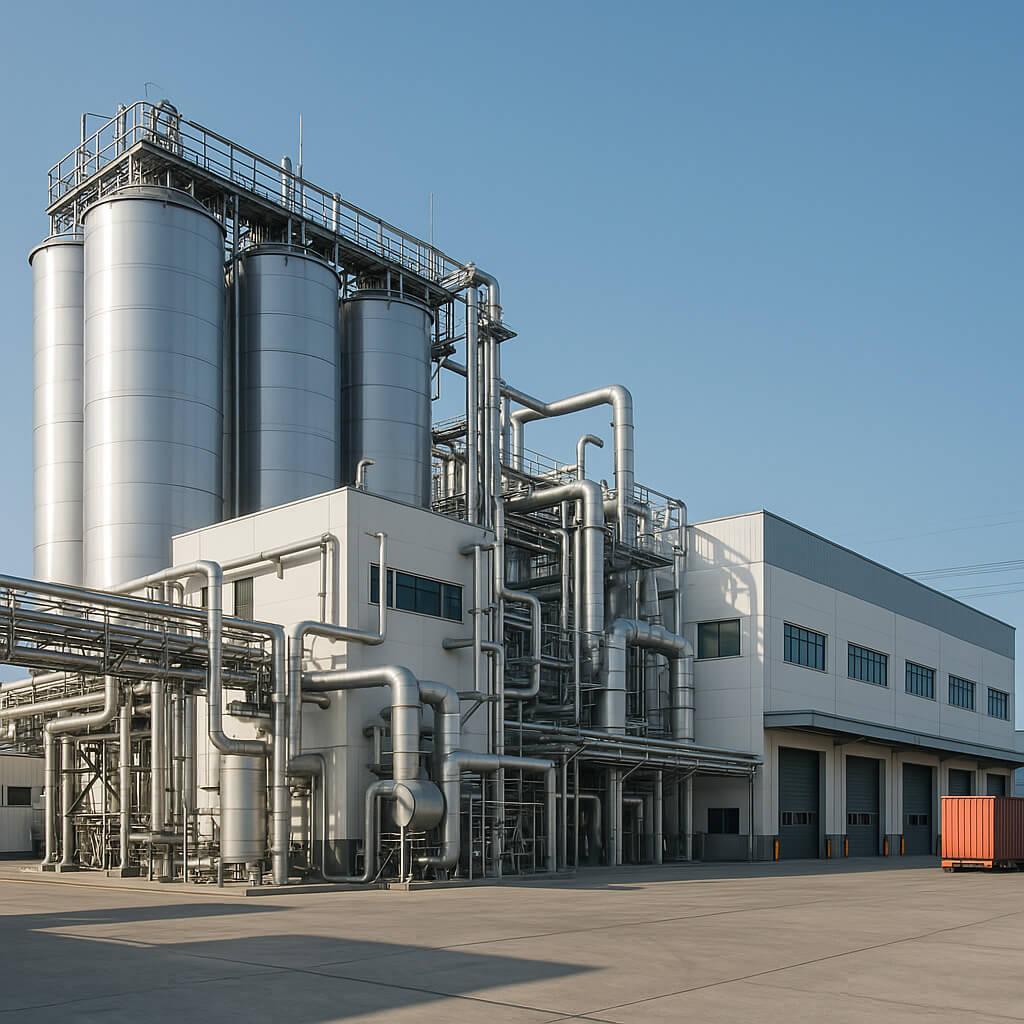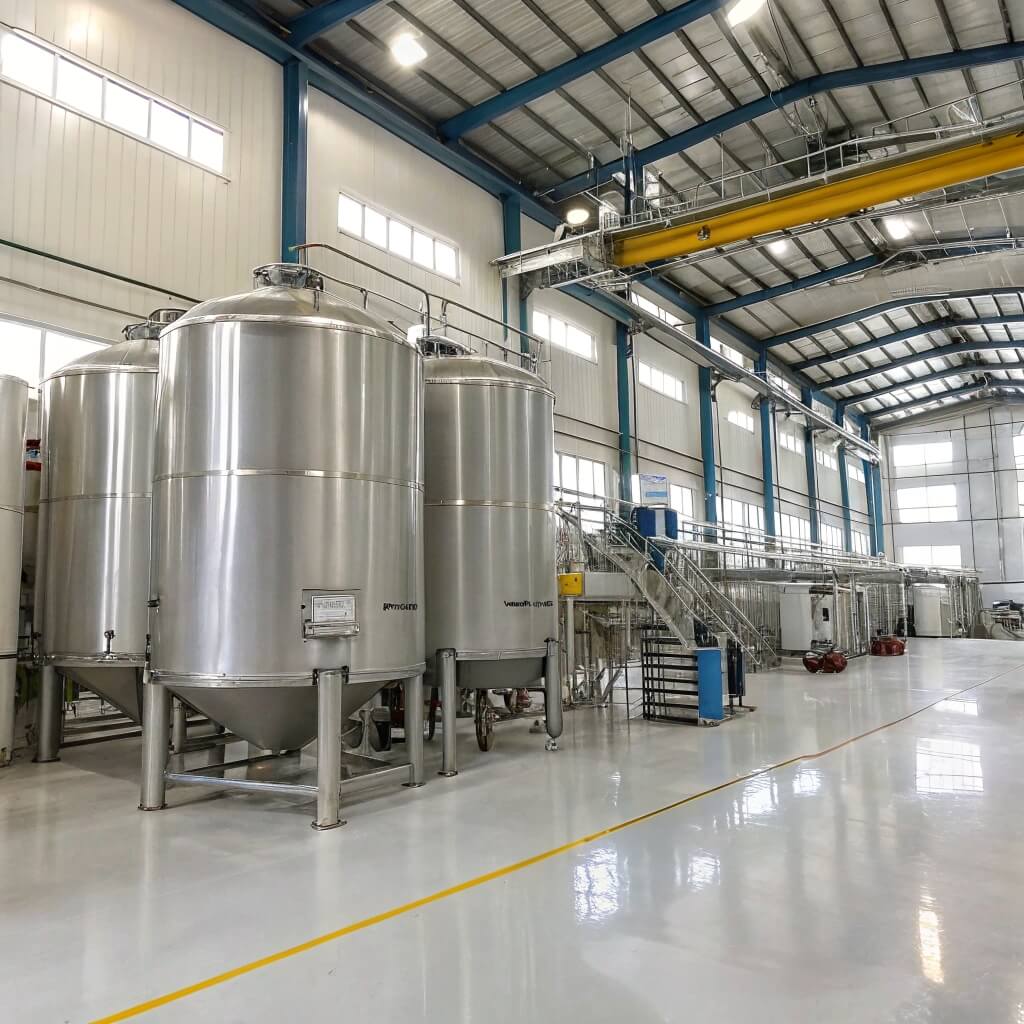Weak tile bonds lead to costly failures, ruined projects, and damaged reputations in the construction industry.
HPMC (Hydroxypropyl Methylcellulose) significantly improves bonding strength in tile adhesives by controlling water retention, ensuring proper cement hydration, and creating optimal rheological properties. This cellulose ether forms a protective network that prevents premature water loss and enhances adhesion to various substrates.

Close-up view of HPMC-enhanced tile adhesive creating a strong bond between ceramic tile and concrete substrate, showing the adhesive's excellent contact and wetting properties.
Our decade of manufacturing experience shows that proper HPMC selection makes the difference between marginal and superior bonding performance. Let's examine how this critical additive transforms ordinary mortar into professional-grade tile adhesive systems.
What is the role of HPMC in tile adhesive bonding?
Poor adhesives fail prematurely. Tiles detach unexpectedly. Customers demand replacements.
HPMC creates a water-retaining gel structure that keeps moisture available for complete cement hydration while improving adhesive contact with both tile and substrate surfaces. This dual action ensures maximum bond development and long-term durability.
We produce HPMC specifically designed for construction applications, with formulations optimized for tile adhesive systems. Our testing shows that properly selected HPMC grades at 0.25-0.35% dosage levels can increase final bond strength by 30-50% compared to unmodified cement mortars, while doubling or tripling the open time.
The bonding enhancement comes from several physical mechanisms working together. First, HPMC slows water migration into porous substrates, keeping moisture available for cement hydration. Second, it improves the wetting and spreading behavior of the adhesive, ensuring maximum contact area. Third, it creates microscopic air voids that enhance flexibility and stress distribution across the bond line.
These effects combine to produce tile adhesives that meet or exceed industry standards like EN 12004 (C2 classification) for high-performance cementitious adhesives. The improved bonding translates to reduced callbacks, lower warranty claims, and enhanced reputation for both adhesive manufacturers and tile installation contractors.
How does HPMC enhance tensile adhesion and bonding strength?
Standard mortars fail under stress. Bond areas shrink during drying. Adhesion becomes spotty and weak.
HPMC boosts tensile adhesion strength by ensuring uniform cement hydration throughout the adhesive layer and minimizing shrinkage cracks that can weaken bonds. The polymer network also improves flexibility, allowing the adhesive to accommodate minor substrate movement without bond failure.
Our laboratory testing consistently shows that HPMC-modified adhesives achieve 20-40% higher tensile adhesion values than standard mortars. This improvement results from both physical and chemical interactions within the cementitious matrix. The water-retaining properties of HPMC ensure complete cement particle hydration, maximizing the development of calcium silicate hydrate (C-S-H) crystals that provide mechanical strength.
We conduct regular pull-off adhesion testing according to EN 1348 standards to quantify these improvements. Tests performed on various substrates—concrete, cement board, existing ceramic tiles—demonstrate that HPMC-modified adhesives maintain consistent bonding performance across different surface types. This versatility is crucial for real-world installations where substrate conditions vary widely.
The tensile strength enhancement becomes even more significant under challenging conditions. After heat aging or water immersion cycles, standard adhesives often show dramatic strength reduction, while HPMC-modified systems maintain 80-90% of their original bond strength. This durability factor proves especially important for exterior applications, wet areas like bathrooms and kitchens, and heated floor installations where thermal cycling creates additional stress.
What is the mechanism of HPMC in improving surface bonding?
Water escapes too quickly. Cement particles remain unhydrated. Contact area diminishes during cure.
HPMC forms a protective colloidal network that temporarily binds water molecules through hydrogen bonding, creating a controlled-release moisture reservoir for optimal cement hydration. This mechanism ensures the adhesive maintains plasticity long enough to develop maximum surface contact while preventing rapid drying that leads to weak, incomplete bonding.
We study the microstructure of hardened adhesives using scanning electron microscopy to visualize how HPMC influences bond development. These analyses reveal that adhesives without HPMC often show incomplete hydration near the substrate interface, creating weak zones prone to failure. In contrast, HPMC-containing formulations show uniform crystal development throughout the adhesive layer, including the critical boundary zones where bonding occurs.
The methyl and hydroxypropyl substitution pattern of our HPMC products creates an ideal balance of water retention and cement compatibility. The hydroxypropyl groups enhance interaction with calcium ions in the cement paste, creating temporary bridges that later contribute to the three-dimensional structure of the hardened adhesive. Meanwhile, the methoxyl groups control the initial water binding capacity that determines early workability.
Beyond water retention, HPMC contributes to bond strength through its influence on rheology. The pseudoplastic (shear-thinning) behavior it imparts allows the adhesive to flow and wet surfaces when under pressure during troweling, then recover structure to prevent slumping. This behavior maximizes the true contact area between adhesive and bonding surfaces, eliminating air pockets and ensuring complete surface coverage.
How does HPMC impact formulation, mixing, and application?
Wrong HPMC grade clumps during mixing. Incorrect dosage ruins workability. Application becomes difficult and bonds suffer.
HPMC significantly influences the entire adhesive lifecycle from dry powder to final cured state. During formulation, it requires proper dispersion among other dry ingredients to prevent lumps. During mixing, it controls water demand and consistency development. During application, it determines trowelability, open time, and slip resistance.
We manufacture HPMC with controlled particle size distribution specifically designed for construction dry-mixes. Standard grades use 80-mesh particle sizing that balances dissolution speed with lump prevention, while specialized fine-ground grades offer faster dissolution when needed for machine-mixed systems. This particle engineering prevents the formation of "fish-eyes" and undissolved clumps that plague poorly designed products.
For standard tile adhesive formulations, we recommend HPMC addition rates of 0.25-0.35% by weight of dry mixture. Within this range, higher dosages produce longer open time and better water retention, while lower dosages reduce cost but provide shorter working windows. The optimal selection depends on intended application conditions, with exterior and high-temperature applications benefiting from higher dosage levels.
Der water demand of adhesive formulations changes with HPMC addition, typically requiring 1-3% additional water compared to unmodified mortars. This increased water requirement must be considered during formulation to maintain the desired consistency. Our technical team assists customers in optimizing these ratios based on specific cement types and regional raw materials.
During application, HPMC-modified adhesives show distinct advantages in trowelability, with smooth, creamy consistency that reduces applicator fatigue. The improved slip resistance allows secure placement of heavy tiles on vertical surfaces, while the extended open time reduces waste from premature skinning. These application benefits translate directly to installer productivity and installation quality.
Mixing and Workability Characteristics with HPMC
| HPMC-Dosierung | Mixing Behavior | Offene Zeit | Rutschfestigkeit | Wassereinlagerungen |
|---|---|---|---|---|
| 0.15-0.20% | Fast wetting | 15-20 min | Mäßig | Gut |
| 0.25-0.30% | Balanced | 20-25 min | Gut | Exzellent |
| 0.35-0.40% | Slower wetting | 25-30 min | Exzellent | Vorgesetzter |
The correct mixing sequence also matters significantly. For best results, we advise manufacturers to add HPMC to the dry mixture before water addition, ensuring thorough distribution throughout the powder. This prevents localized over-concentration and gel blocking that can occur when HPMC contacts water directly. Modern high-shear mixers facilitate quick and uniform dispersion even at higher viscosity grades.
What are the best practices for using HPMC in tile adhesive?
Generic recommendations fail. Climate differences matter. Application methods vary widely.
Best practices for HPMC usage start with selecting the appropriate viscosity grade based on specific application requirements and environmental conditions. For standard interior applications, medium viscosity grades (30,000-40,000 mPa·s) provide good balance of performance and cost, while exterior and challenging applications benefit from higher viscosity products (45,000-65,000 mPa·s).
We work with adhesive manufacturers globally and have identified several critical success factors. First, match the HPMC dissolution rate to the mixing method—slower dissolving grades work better for hand mixing while rapid-dissolving types suit machine mixing. Second, adjust dosage seasonally if necessary, with higher levels in summer when rapid drying threatens proper curing. Third, ensure proper package protection against moisture to prevent premature HPMC activation.
The molecular weight and substitution pattern of HPMC significantly impact performance. Our products designed for tile adhesives feature optimized methoxyl content (28-30%) and hydroxypropyl levels (7-12%) that balance water retention with cement compatibility. These specialized grades outperform general-purpose HPMC in construction applications where long open time and strong final bonding are critical.
For manufacturers developing new formulations, we recommend a systematic approach starting with small-scale laboratory testing before scaling to production. Initial screening should evaluate basic parameters like consistency, open time, and vertical slip, followed by standardized adhesion testing under various conditioning regimes. This methodical process identifies the optimal HPMC grade and dosage for specific performance targets.
Application best practices also extend to job site conditions. Applicators should know that HPMC-modified adhesives perform best when both substrate and ambient temperatures range between 10-30°C. Extreme conditions require special attention—very high temperatures may demand additional water or specialized grades with enhanced thermal stability, while very low temperatures slow setting and may require warming of materials before use.
FAQs
What is bonding agent for tiles?
A tile bonding agent is an adhesive compound that creates strong mechanical and chemical bonds between tiles and substrates. Modern bonding agents typically contain cement, aggregates, and additives like HPMC. The HPMC component ensures proper water retention, extends open time, and improves adhesion properties, resulting in maximum bond strength even under challenging conditions.
What is the role of HPMC in coating?
In coating applications, HPMC functions as a thickener, water retention agent, and film-former. It provides critical rheological properties that allow smooth application while preventing sagging on vertical surfaces. HPMC enhances the coating's ability to level while maintaining thickness consistency, improves adhesion to substrates, and controls drying rate for optimal film formation.
What is the tensile adhesion strength for tile adhesive?
Tensile adhesion strength for quality tile adhesives typically ranges from 1.0-2.5 N/mm² depending on classification. Standard C1 adhesives must achieve minimum 0.5 N/mm², while premium C2 products must exceed 1.0 N/mm² under EN 12004 standards. HPMC-enhanced formulations regularly achieve 1.5-2.0 N/mm² tensile strength, ensuring secure bonding under various stress conditions.
Can you use tile adhesive as filler?
Tile adhesive can function as a limited filler for small gaps and minor surface irregularities, but it's not ideal for deeper repairs. While HPMC improves its workability as a filler, tile adhesives lack the specialized aggregate gradation and polymer content of dedicated fillers. For structural repairs or gaps exceeding 10mm, purpose-made fillers or repair mortars deliver superior performance.
Abschluss
HPMC plays a crucial role in developing high-performance tile adhesives with superior bonding strength. Through its water retention mechanism, rheology modification, and cement hydration control, this cellulose ether transforms basic cement mortars into professional-grade adhesive systems that meet demanding performance standards for both commercial and residential applications.
Our manufacturing expertise and extensive testing confirm that proper HPMC selection dramatically impacts final adhesive performance. The right grade and dosage level ensures optimal open time, excellent vertical slip resistance, and maximum bond development—critical factors for successful tile installations across diverse environmental conditions and substrate types.
Contact our Morton technical team for personalized recommendations on HPMC selection for your specific tile adhesive formulation needs. We provide comprehensive technical support, including formulation guidance, performance testing, and customized product development to help you achieve superior bonding strength in your adhesive systems.




